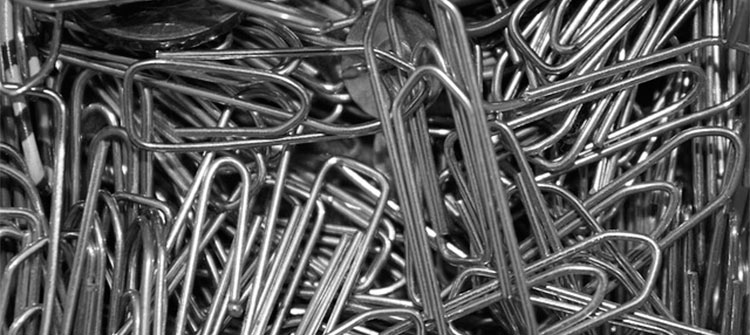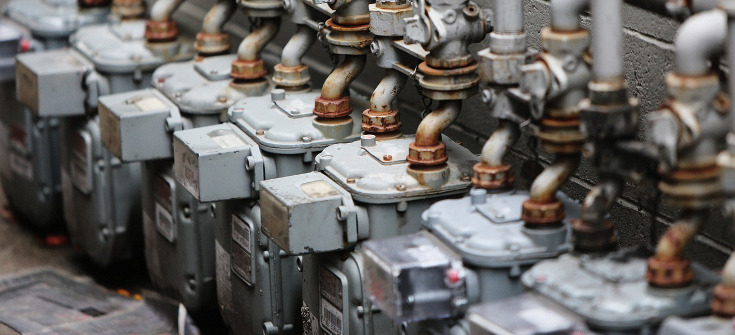With more businesses trying to go green and lessen their ecological footprint, you’d the think the amount of paper used per company would be dropping. It’s not. According to abnsave.com, company paper use has been steadily rising since 2009 with a 25-percent annual increase. That’s a lot of paper.
With companies running lower and lower on business funding, some are finding it hard to keep up with the cost. Your company probably spends around $200 per employee per year on office supplies. That number goes up to $2,000 if you include the costs of office equipment. Running a business is expensive, but there ways to make it more affordable.
1. Get a credit card gives you cashback on every purchase. Better yet, look for a business credit card that offers bonus points (or extra cashback) on office supplies. That way you’ll be paying yourself with every purchase you make for your company.

2. Keep an eye out for sales. Don’t believe anyone who tells you there’s a best time of the year to save. The price for a business computer will fluctuate throughout the year, but there’s not a guaranteed season when all computers get their best discounts. It’s up to you to compare prices and be able to recognize a good deal.
3. Shop online and use coupon codes. There’s a reason online retailers are putting neighborhood stores out of business, and it’s not just about convenience. From what we’ve seen, it can be easier to find a good deal when you shop online. Plus, a lot of the time you can use a promo code to make it even more affordable.
4. Shop multiple stores. It might be easier to get all of your office supplies from the same place, but you’ll pay a pretty penny for that convenience. It’s smarter to shop around and look for sales. If you restrict yourself to just one store, you’ll miss out on the sale items found at other shopping locations. (Note: There is value to being a loyal customer and taking advantage of loyalty programs. You just need to know when it makes more sense to shop somewhere else.)

5. Reuse (instead of replacing) old office equipment. Your office’s old computers might not have the latest operating system, but that doesn’t mean you should swap the hardware for something new. You might be able to revitalize the machines by downloading new software. If you’re not sure how to upgrade your electronics, consider hiring a freelance computer repair technician. They should be able to quickly get your old machines in tip-top shape.
6. Host your data on the cloud. A dedicated server is an expensive investment. First, you pay for the hardware, and then you have to pay to maintain the system. Fortunately, there’s another way. Moving your data to the cloud can be a cheaper option.
7. Buy office supplies in bulk. The price per item will sometimes go down if you buy enough at once. But buying in bulk doesn’t always save you money. That’s why it’s important to do the math and make sure the bigger purchase makes sense. But before you do that, figure out if you actually want the product. You don’t want buy a thousand pens that don’t work right. If you’re buying in bulk, you should use brands and products you trust.

8. Change your printer settings to use less ink. You can make that toner last a whole lot longer if you know how to properly program your printer. (Pro tip: Make sure your employees know not to print personal documents at work.)
9. Monitor and control spending. Your employees don’t care about your money nearly as much as you do. So if you put them in charge of spending it, they’ll likely pay more than you would for the same product. Keep tabs on purchases and hold your employees responsible for overspending.
10. Avoid buying supplies you already have. Keep a careful record of what supplies you have. This will save you from accidentally purchasing items you don’t currently need. It’ll also help you stay a step ahead of shortages, so you are not desperate for new supplies when you are shopping for them. Desperation shopping can lead to you paying more than if you had a little more time to shop around.
Practicing energy efficiency and lowering your electric, gas, and water bills can save you quite a bit of money in the long run, and that extra money might help you bridge a future cash-flow gap.
It’s the digital age and that means your office likely spends a lot on electricity. Your first step toward reducing these costs is to figure out which devices in your office require the most energy.
The Biggest Energy Hogs Might Surprise You
What uses more power, your printer or your coffee maker? According to Edlen.com, an inkjet printer uses 100 watts, while a 12-cup coffee maker uses 1,200 watts. That’s quite a difference and it’s a reason why coffee makers make it on the list of the most energy inefficient appliances in the office. Other culprits include hot plates and electric burners, portable heaters, and scanners.
We recommend telling your employees not to use some of these items in the office.
Devices Can Waste Power Even When They’re Off
According to a recent article from The New York Times, many electric devices use just as much juice when they’re off as when they’re on. If your company uses an Apple TV (first generation) to broadcast your laptop to your conference room TV, the Apple TV will use 21 watts when it’s on and 17 watts when it’s “off.” And if you leave your MacBook open while you’re charging it, it’ll burn 27 watts.
On average, if you leave your laptop plugged in when it’s done charging, it’ll burn through 4.5 kilowatt-hours of electricity each week. That’s 235 kilowatt-hours over the span of a year – all while you aren’t even using it.
Other Tips for Saving on Electricity
Here are a few more tips on how to spend less on power:
Energy Star appliances use less energy, but it doesn’t always make sense to invest in them. If you already have appliances that work, it might be smarter to wait until they break before you swap them out for energy-efficient models. When you do replace them, try to look for any tax breaks offered to businesses for going green.

The main reason you’ll use gas in your office is to fuel your heating system. Here are some tips on how to run your office heater as efficiently as possible:
Besides weather-strips and thermostat hacks, there’s another way you can reduce the cost of your gas bill: improve your building’s insulation. Better insulation means less energy wasted cooling and heating your building.
Finding out about the current state of your building’s insulation might require a call to your property manager. Ask them when the last time your office’s insulation was upgraded. You can request improvements, and while your property manager doesn’t have to oblige, it doesn’t hurt to ask.

Water is probably your least expensive utility, but you still might be spending too much on it – and not just the kind that comes out of the faucet. If you pay to have bottles of water delivered to your office, try switching to a water filter.
You can get an office water filter cooler for about $300. The replacement filters will set you back about $50 each (about what you’d pay for 10 five-gallon bottles delivered to your office), but each filter should be certified for over 1,000 gallons of water. So that’s $50 for 1,000 gallons versus $50 for around 50 gallons of bottled water. There’s a clear winner there.
These tips should help you reduce the cost of your utility bills. But if you want to pinpoint the areas you should improve, consider hiring an energy audit company to inspect your place of business. This service is sometimes free.
Chances are you know a few other areas where you’re wasting money on utilities. It might be time to crunch some numbers and see if it’s worth it to fix them. Remember, energy-efficient appliances and devices aren’t always worth it in the long run.